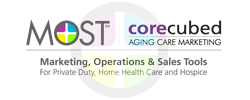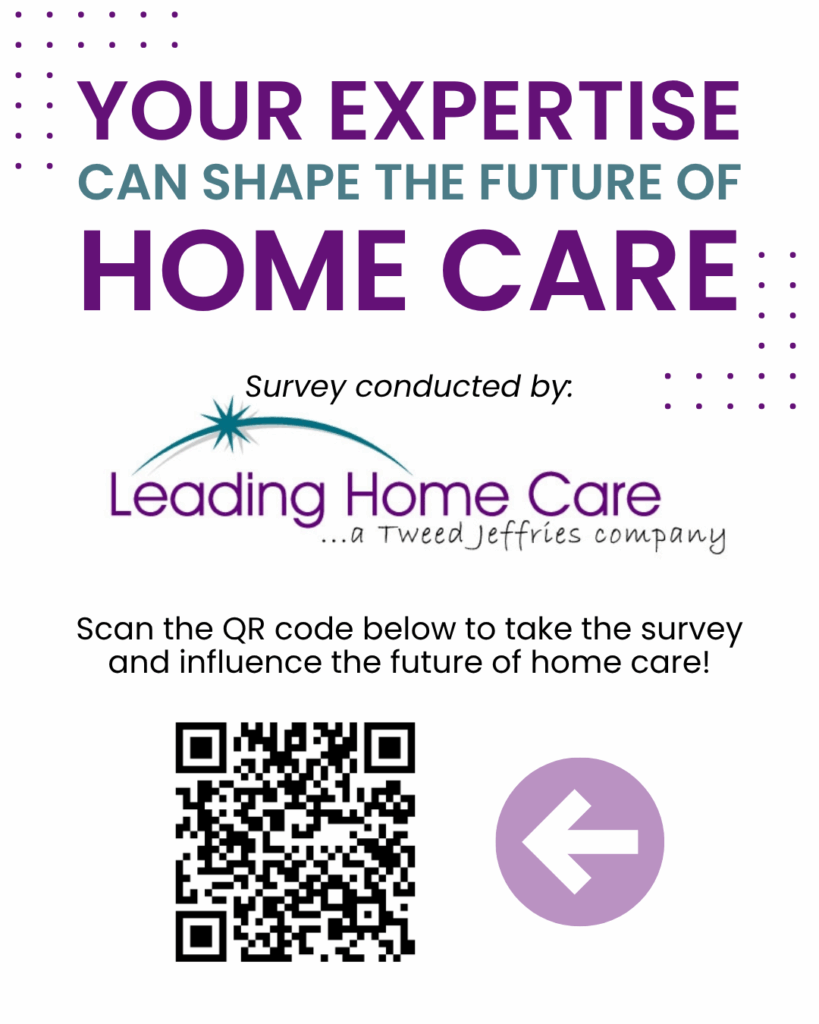By Merrily Orsini, CEO of corecubed
Marketing any product or service requires an understanding of the targeted market, and this is especially crucial when marketing an “at-need” service such as home care, for a variety of reasons. For one, the buying decision is oftentimes not made by the end user; in fact, the end user may be disinclined to even WANT the service, as is often the case for older adults who don’t feel that they needhome care. Additionally, there is no “one size fits all” solution to home care. Each individual is unique in needs, and each individual comes with variances in financial ability to pay for services, type of care needed (dementia or physical frailty, or combinations of both), his or her current formal and informal support systems and how they interface with the agency.
Given those challenges to selling, it is imperative that the agency adopts a strategy that aligns with best practices for marketing and selling home care. Your marketing strategy is based on your message, your target markets, how you plan on reaching those targets and how you visually present yourself and your business to those targets and the world.
1. Find a way to stand out: differentiate to be remembered
2. Understand the target audience
3. Understand the messages that resonate with the target
4. Marry the visual with the message
5. Communicate often in channels that reach the target
6. Establish and extend your agency brand
7. Focus on results, based on measurement
Home care marketing strategy is comprised of how you promote, position, communicate, and approach whoever you think is your target. And that target may be a wide range of people from family members to neighbors, from the medical community to the financial community to the leisure activities community. Actually, if you are providing private duty services, then anyone with a care need or anyone who knows anyone with a care need is your target. So, how can you effectively be where those seeking care will find you?
First, it is true that the general consumer is a different target than a professional referral source. But, marketing to both is not always mutually exclusive. Certainly, there are different ways to direct messaging, particularly if you are doing direct mail, designing a brochure or a rack card, or writing a letter, to name a few. However, marketing to both targets simultaneously is not only possible, but can (and does) get great results, if you understand the strategy behind and the power of inbound marketing. Inbound marketing strategy allows for people who are searching for care, trying to solve care needs or looking for solutions or help to find your agency. It is a strategy based on positioning: positioning your agency to be the “go to” source for solving home care issues.
Inbound marketing starts with a good, well-designed and easy-to-navigate website. It includes content used in a variety of ways: online, in email communication, in social media, in community educational presentations, and in the media. In order to be effective, the visual has to reinforce the message, and it is highly important for that visual to extend the agency brand of quality care.
Join the most successful agencies that are using a proven system to grow: corecubed’s MOST program. The MOST program is unlike any other home care marketing program. It was created for home care, for inbound marketing, for positioning the agency as the experts in in-home care. And it definitely works. It was designed by and is managed by experts in home care who know a) the issues that affect those needing care and b) how to provide helpful resources in an educational format that communicates with a targeted audience.
The MOST program has processes and materials that target both the consumer and the referral sources differently and directly (postcards, rack cards, eBooks, videos) as well as processes and materials that extend the agency brand and meet the needs of both the consumer and referral sources when they in turn are seeking to meet the care needs of an individual, a client or a patient.
Consistently staying in front of both consumer and referral source targets is the best way to remain top-of-mind when a care need arises. The MOST program provides a proven, strategic, and easily implemented system to keep your agency ahead of the competition.




